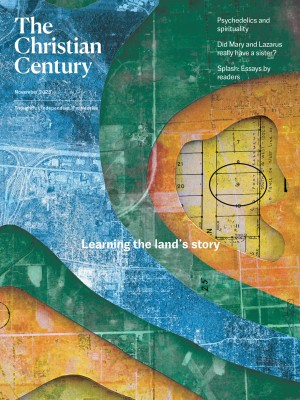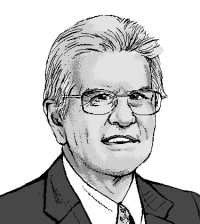The literal drama of church history
Life in the Roman and Byzantine empires was utterly theatrical.

(Photo by Selim Çetin / Pexels)
My new book concerns the iconoclasm struggles of the eighth and ninth centuries, the battle over whether to venerate or reject sacred images. When I began this project, I knew I would be addressing issues of history and theology. What amazed me was how much time I spent on the theory and practice of drama and theater. Perhaps this should have been obvious. In a society where life is so saturated with liturgy and sacrament, that drama—that staginess—pervades public life. This realization makes me rethink many church history texts I thought I knew well.
Most of the history of the Roman/Byzantine world in this period is written in terms of emperors, generals, and patriarchs, with ordinary people largely absent from the political realm. In reality, emperors were keenly aware of the need to cultivate public opinion. A culture of constant spectacle projected the image of power, through the pageantry linked to great religious festivals, with its heavily symbolic routine of parades and public appearances. In Constantinople, the central public institution was the Hippodrome, the setting for the chariot races, where groups of faithful fans gathered under various colors. But the Hippodrome, the people’s arena, was also the scene of events that required mass participation in state occasions where emperors were celebrated and foes humiliated. The public joined the theatrical action through chants or ritualized exchanges with the emperor.
Read our latest issue or browse back issues.
The great iconoclast ruler Constantine V made brilliant use of such performances. In a terrifying example from the 760s, he demonstrated his fury with the monks who opposed his religious policies. He began an appearance in the Hippodrome by crying out that he could no longer tolerate that God-hated swarm. The vast crowd supposedly answered, unprompted, that their good master—literally, their despot—would never again see a trace of the monks’ black habits in the city.
As recorded, these call-and-response dialogues are unconvincing. Crowds of tens of thousands simply could not have spontaneously joined in the chants and slogans that they are reported to have used. Presumably, imperial agents scattered throughout a crowd cried out the slogans, which others joined in as best they could. There might have been mass coaching beforehand. In any case, the outcome was that the ruling elites heard their policies affirmed as the will of the people. When enemies or disgraced plotters were produced for their amusement, crowds enthusiastically jeered and spat at the victims, who were led away for mutilation or execution. Modern readers will think of Stalinist Russia or contemporary North Korea.
In both state and church, Roman/Byzantine public life in this era was utterly theatrical. Drama is a Greek invention, yet by the eighth century the tradition of public stage performance had faded to nothing. But broadly defined, performance remained very much alive through the court, the church, and the Hippodrome—including lavish costuming, sets, and what we would call special effects. In both the Greek East and Latin West, the church’s liturgy was heavily theatrical, with its integration of music, lighting, and movement and its elaborate sets and costumes.
At one point, Constantine’s faithful servant George had reportedly gone over to the monks’ side. This provoked the emperor to arrange a spectacular that mandated the attendance of everyone in the city. He began by showing his populist side, imitating a victorious charioteer by crying, “My fortune [the goddess Tyche] has won! God has heard my prayers!” This would be equivalent to a modern general or pope making a popular culture reference. The emperor then engaged in a call-and-response dialogue. When he declared that God had heard his prayers, the massed thousands allegedly responded by asking, with one voice, “When did he ever refuse to listen?”
George then appeared in his monastic robe, as the crowd cried for him to be killed. As he was stripped of his sacred garments, they were thrown to the mob and trodden underfoot. George survived his ordeal, as the emperor was far more concerned with making a definitive statement against monasticism. Naked, George was held by four men as a jug of water was poured over his head, a symbolic rebaptism that recalls the forcible conversion of Jews. Once cleansed of the stain of monastic darkness, George was reclothed in secular military garb, as the emperor personally presented him with a sword.
Time and again, I find myself writing about drama, theater, and special effects. Some 30 years after his death, Constantine’s iconoclast partisans staged his sensational resurrection from his tomb, with the goal of sparking an anti-icon revolution. When the tomb doors opened with an explosive crash, supporters poured in to plead with the emperor to return and save the state. Reportedly, he did indeed respond, reappearing on horseback. What a show!
Some years afterward, an embattled patriarch of Constantinople used his knowledge of stage effects to escape from a political crisis. He cut himself in such a way that he would bleed profusely, without suffering real harm, in order to promote a story that he had escaped a murder plot directed by the empress. Investigation soon revealed the faked and theatrical nature of the whole affair. The contemporary historians who described such happenings freely used words like dramatikos.
Knowing all this background, it is a little shocking to turn to all the great church councils that made Christian doctrine, from Nicea in 325 onward. We study the familiar theological debates, but we sometimes miss the groveling mass declarations of loyalty to the emperors—and especially the ritualized dialogues by which several hundred prelates supposedly greet the proclamation of some new declaration of orthodoxy. (“Thus we all believe, we all are of the same mind! We have all with one voice and voluntarily subscribed!”) If it all sounds stagy and overacted, that is because it is.
A degree in theater would be a wonderful background for an aspiring church historian.






